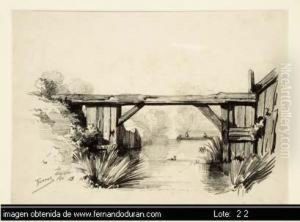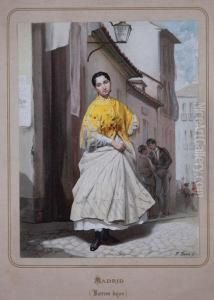Francisco Torres Armengol Paintings
Francisco Torres Armengol, born in 1869 in Teruel, Aragon, Spain, was a prominent Spanish painter and illustrator known for his detailed genre scenes, portraits, and landscapes. He emerged as a significant figure in the Spanish art scene of the late 19th and early 20th centuries, a period marked by a rich cultural and artistic revival in Spain. Torres Armengol's work is celebrated for its meticulous attention to detail, vibrant color palette, and the ability to capture the essence of everyday life in Spain during his time.
Educated at the Royal Academy of Fine Arts of San Carlos in Valencia, Torres Armengol was deeply influenced by his studies and the artistic environment of the time, which was characterized by a blend of traditionalism and the emerging modernist sensibilities. He was particularly known for his genre paintings that depicted scenes of Spanish life with a realism and sensitivity that resonated with both critics and the public. His works often featured the landscapes and people of Aragon and Valencia, reflecting his deep connection to his roots.
Throughout his career, Torres Armengol participated in numerous exhibitions and received significant recognition for his artistic contributions. His paintings were exhibited in major Spanish cities as well as internationally, contributing to the growing interest in Spanish art during the period. Despite his success, Torres Armengol remained committed to his artistic vision, exploring themes of social commentary and the beauty of ordinary life in his work.
Francisco Torres Armengol's legacy is preserved in various museums and collections in Spain and around the world. His death in 1917 marked the end of a prolific career, but his influence continues to be felt in the realms of Spanish painting and illustration. His works remain a testament to the vibrancy and diversity of Spanish culture and art at the turn of the 20th century.


